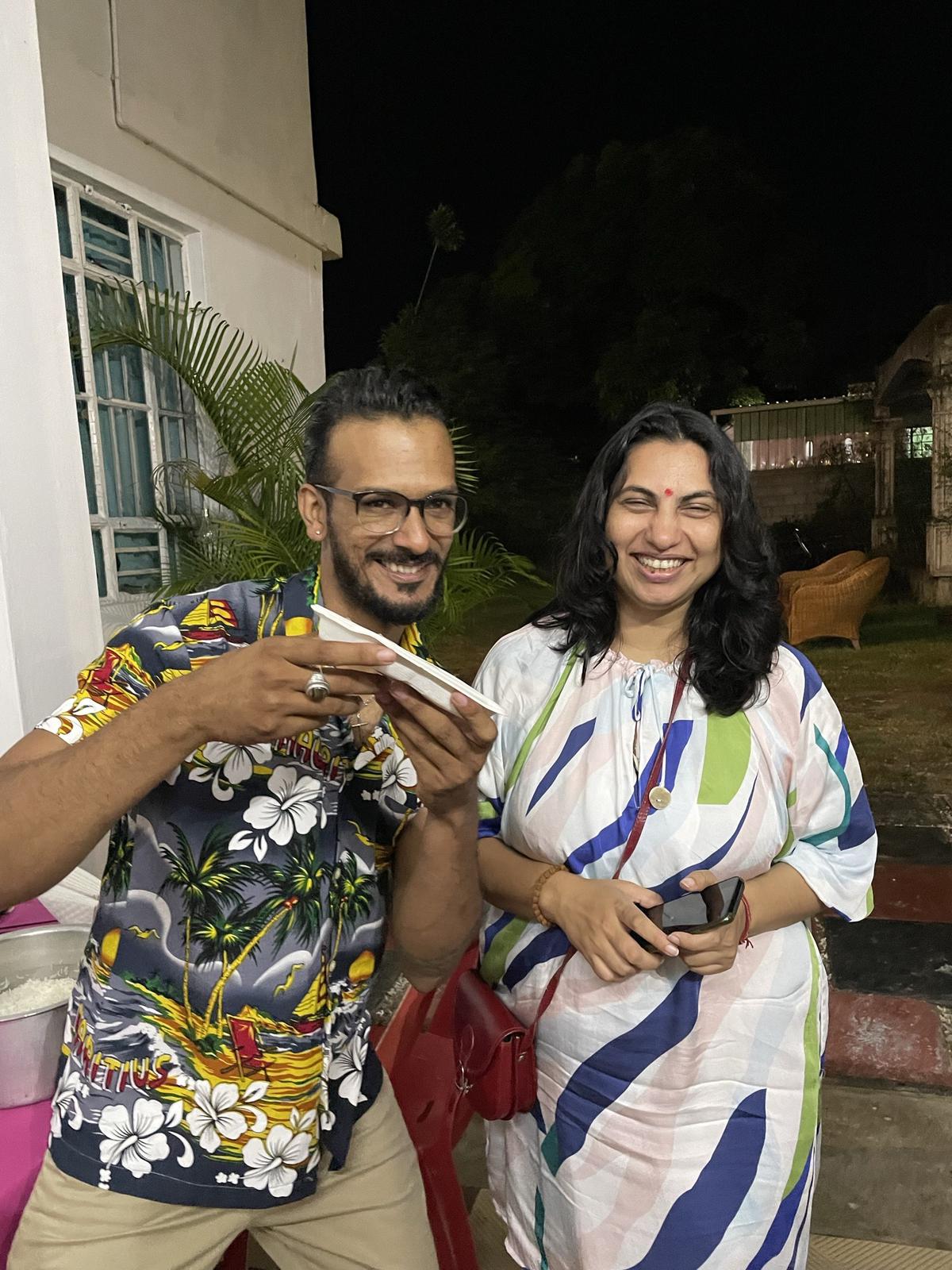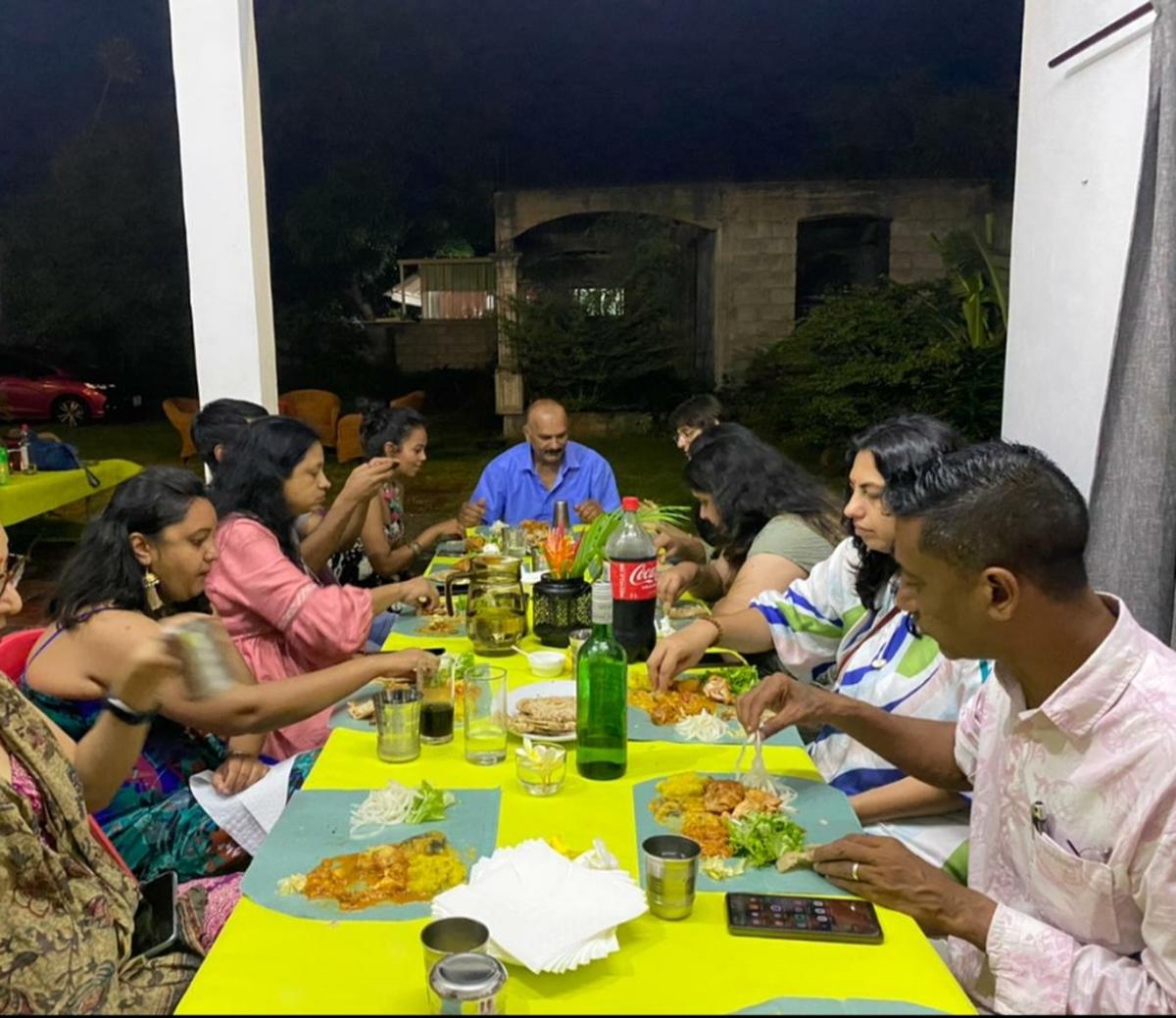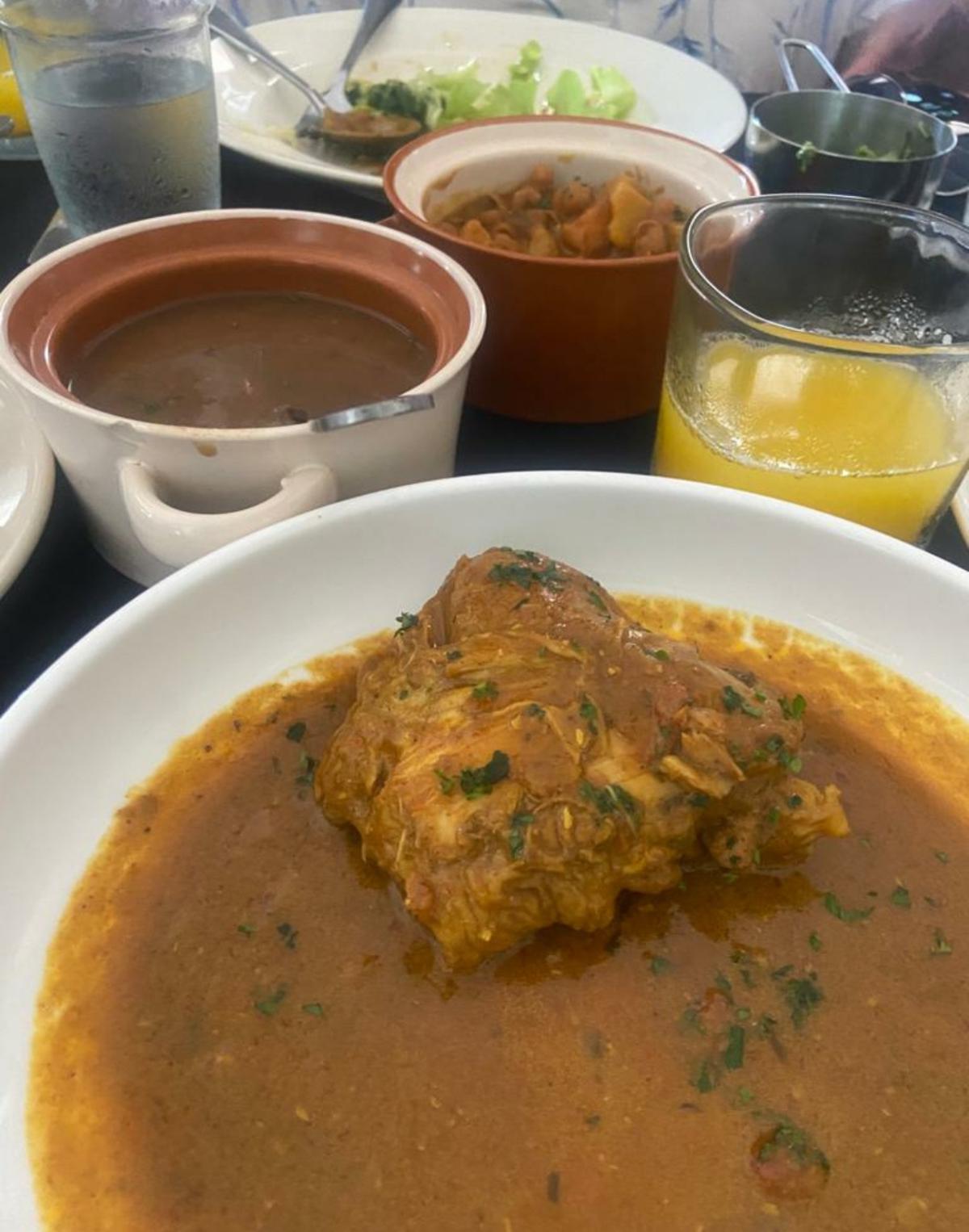‘Indianish but not Indian’ describes Mauritius best
From garam masala made with Madagascar spices to fritters stuffed with prawns and béchamel sauce, local meals in Mauritius are familiar yet so exotic
From garam masala made with Madagascar spices to fritters stuffed with prawns and béchamel sauce, local meals in Mauritius are familiar yet so exotic
It’s a glorious autumn night in April in Mauritius when a small bus with disco lights and local Sega music drops us off in a village named after piment (chilli, in Mauritian Creole). We are at the house of Ved Bhujun, whose forefathers had set sail from India almost 200 years ago to this blue-green land.
The Bhujun family has retained its Indian heritage, despite a very mixed Creole gene pool now. A temple guards the home’s garden, we are welcomed with lit lamps, and Ved’s son — with the Indian Navy till a few years ago, and now in Mauritius’ anti-narcotics squad — tells me how, when he gets married, he will have not only Indian-style music and dancing but also a “turmeric ceremony”. There is nothing religious about these rituals; they are just vehicles for memories. As is the food. You realise as you taste it, here’s something that is Indianish, but not Indian — spices sans pungency, cultural resonances reshaped into new flavours.

Ved Bhujun’s son with the writer
Coolies to Creole
In Mauritius, the heritage of Indian forefathers who had arrived on ships as indentured labourers to work in the European-owned sugar cane farms and mills in the mid 19th century, lives on, revered.
With slavery abolished after the French Revolution, and Britain trumping its rival maritime colonial power of the time, France, labour began to be contracted from all over India in 1834, and 41,000 Bengali ‘coolies’ landed in this Indian Ocean island. More came in the subsequent years — from Bihar and Andhra, the central provinces, and the southwestern coast; poor Indians searching for better wages, across the ocean and continent, their homeland lost.
As they settled, they mingled with other immigrants, those from Africa, China, the Malay, as also the Creole born on the island. As races mixed, Bhojpuri and Telugu seeped into Mauritian Creole, and these are the words we hear everywhere: chatni and baija (from bhajiya) being just two liberally served up this evening, as Ved cooks for us in his home.

A plate of baijas
Snacks are what he calls “half moons”, shaped much like the Goan rissoi, filled with prawns and bechamel sauce, as well as “chilli bites”, a descendent of the moong dal pakori (fritters) of old Delhi or Madhya Pradesh, spiked with green chillies. These are part of the large baija repertoire of the island, fried everywhere, with anything from potatoes and white onions to lettuce.
Ved’s lavish home cooked meal moves on to the mains and as a nephew belos (rolls) paratas, there are several curries to be tried — chicken, fish but also chayote (a thin-skinned squash similar to pumpkin), all fragrant and full of spices, but not really pungent with either the black pepper or red chillies of India.

Dinner at the Bhujuns
It’s a lavish spread set in an open verandah that functions both as a kitchen and dining area, and merges into a beautiful garden. Preceded by many steel glasses of rum punch (made from the family’s own infusion of rum with vanilla; every family in Mauritius seems to have its own ‘home made’ special), it is succeeded by some frenetic partying to Bhojpuri-meets-Bollywood club music.
Hook a marlin
Mauritius is the global hotspot for deep sea fishing, and anglers come here in summer (January) for a prestigious blue marlin fishing competition conducted by the Le Morne Anglers’ Club. Dubbed the South Indian Ocean Billfish Competition, it’s a busy and festive time on the island.
What is truly authentic?
Post the pandemic, as travellers from around the world seek out the otentik (authentic), as they say in Creole, local experiences such as this are increasingly offering people an immersion into a syncretic culture that is uniquely Mauritian.
I’ve booked Ved’s family dinner via my hotel Ravenala Attitude, part of a large chain of 100% Mauritian hotels (fully Mauritian owned, they employ only local staff), where dining with family of staff members is a legit experience. Ved works with the hotel and dinners such as this — which you may book either via the hotels or independently — cost just around Mauritian Rs 700 per head (approx ₹1,225), plus transport.

A home cooked Mauritian meal
There are similar local dining experiences all over the island, with home cooks, and even former hoteliers or chefs now curating small, personalised experiences to showcase their unique melange of a culture. Indians are excitedly welcomed everywhere thanks to older bonds, and everywhere we go, we land up discussing masala or garam masala (made here with Madagascar spices) and how this is “like India, but not exactly”. In fact, even French-style jus and brown sauces in dishes like grilled chicken sometimes come spiked with garam masala. I ate pizza with tamarind chutney reminiscent of Indian chaat at one popular establishment, too! Apparently this combination is perfectly acceptable on an island where all definitions of ‘original’ are rightly put to rest, such is the diversity and composite-ness of culture.
An imaginative table
Small restaurants like Karay Mario, set up by the eponymous Mario, a 60-plus retired hotelier, in an erstwhile apothecary that treated sugar mill workers once upon a time, also give you a full taste of Mauritius’ Indian heritage.

Mario of Karay Mario
Karay, a play on karahi or wok, serves a range of fried gazaks (the generic Arabic word for snacks is the Mauritian word too, pointing to global trade links) that also includes sambusa and dholl puri (lentil puris), apart from the baija and curries.
Franco-Mauritian families have also incorporated some of these flavours into their own culinary culture, with slight twists. Chilli bites thus become gateaux piments, literally chilli cakes, though the French families, who still own many of the large estates producing sugar cane, vanilla and other fruit, barely use any chilli. The culinary exchange between European and Asian styles of cooking also means that delicacies such as sea urchin or octopus of cold breakfasts as well as the smoked blue marlin and other seafood take more imaginative forms, too. At Mario’s, there is a fabulous octopus and breadfruit curry.

Ved with his fish biryani
At Ved’s home, however, we find the most unique fish biryani. He takes some salted fish that reminds me of Macau’s baccala (salted cod; though this is the local sunuk), boils it, then fries it with onions, garlic and tomatoes, tosses it with rice and garam masala to give us biryani-meets-fried rice.
In essence, this is Mauritius. More than the sum of its many parts. A unique microcosm of the world, connected through trade, history, and politics. A convergence of race and tastes.
For all the latest Life Style News Click Here
For the latest news and updates, follow us on Google News.
